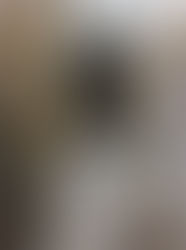Daniel Richter @ Camden Arts Centre
- mcconnellgeorgia
- Aug 7, 2017
- 2 min read

Daniel Richter, Tuanus, 2000.
This cheerfully abstract and psychedellic coloured painting deceives its audience easily. The subject matter is far from cheerful. Richter has taken an image from an American newspaper showing the arrest of several men partaking in illicit things in a park. The title is an interesting one, as Tuanus is intended to be seen as Taunus, which refers to the hills in Frankfurt famous for drugs users in the late and early 90's.
There is also the suspicion that the title is intended to allude to homosexuality, which Richter does more obviously in his later abstract work. For example, in the painting below, the viewer is overwhelmed by the calm purple background and splashes of colour seeing the painting as abstract. However if one tries to distinguish the scene, the elements of Francis Bacon's violent and sexually charged paintings soon become evidently present.


If Richter had painted this image this week, month or year it would be considered cliché or in poor taste. To our audience today this image from a newspaper is instantly reconisable and we have become almost desensitised to hearing or seeing the image of refugees in overcrowded dingy travelling across an unforgiving sea. But instead this was painted in the year 2000 and Richter is drawing attention to the space that the figures create. The colours seem like he had night vision goggles when he painted them, but instead of painting the heat escaping their bodies he painted the colour of their emotions.

This painting to me bears similarity with Edvard Munch's, Ashes, in the way that the forest looms over a barely clothes woman who blends in with the highlights of the trees. Richter is playing on negative space vs materiality. The woman is recognised as a figure because of the yellow robe that she removes or puts on. This creates a tension to the moment as to when she decides to become part of the landscape and no longer a figure. She is clinging onto the edges of the yellow robe while looking into the forest to see what she is to become apart of.
A similar idea applies to the painting below; Richter is blurring boundaries between the material and the invisible. He is inviting the audience into the painting, to become part of it. Or perhaps Richter is simply trying to demonstrate how he puts himself, the artist into his art. It is also interesting to see how the painting itself changes in relation to the space around it in the exhibition; it casts shadows on the floors and walls.


























Comments